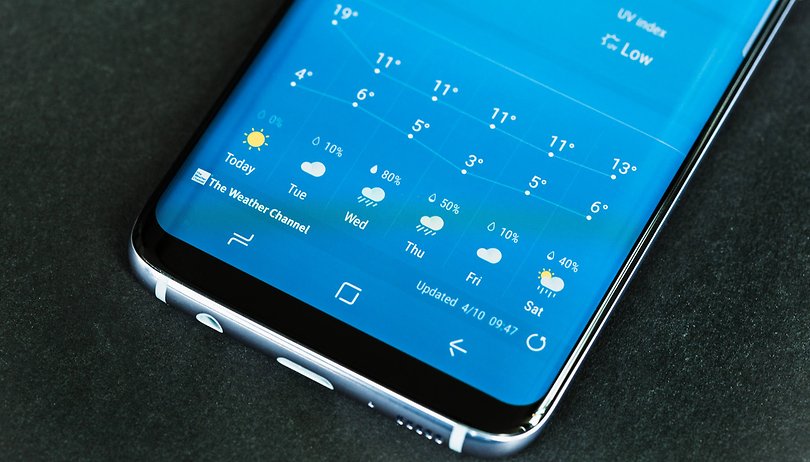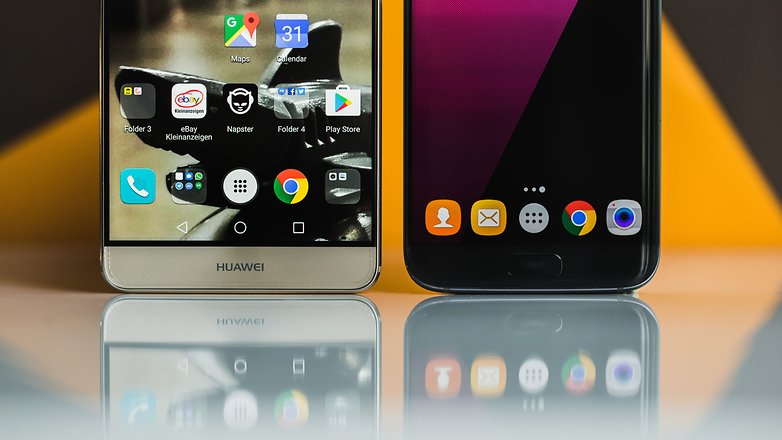Why are OLED screens better for our smartphones?

Perhaps you weren't aware but there are several screen technologies currently in use today, and each smartphone manufacturer has its own tastes and preferences for their devices. The OLED display has an advantage that places it above the rest, especially when it comes to its main competitor: LCD. Let's take a look at exactly what makes OLED superior.
Before looking at the benefits of the OLED screen, perhaps we should explain the concept a bit first. Admittedly, the explanation is in the name itself, as it is in fact an acronym: Organic Light-Emitting Diode. As the name suggests, these screens are composed of diodes that generate their own light. This way of operating has both pros and cons, which we've taken the liberty of examining in detail.
The OLED evokes an idea of purity in its colors...
The more conventional LCD screen uses crystals (hence the name LCD: Liquid Crystal Display) and a backlight system. OLED screens work in a different way thanks to electroluminescence, where light is auto-generated by the close proximity of the diodes’ pixels.
As a result of this, OLED screens offer more vivid colors as they aren’t powered by backlighting. That said, it's especially important to highlight the advantages OLED has in displaying black. While an LCD screen will display the actual color black, an OLED screen displays absolutely nothing at all, i.e. it displays "pure" black. This of course has its advantages when it comes to battery life, as using this screen takes up less energy.

...but in practice, it’s a relative concept
Let's take a look at the concept of contrast, meaning the difference between a very bright screen and a very dark screen. As we've already seen, colors are purer on OLED screens, including white and black (which are not actually colors): the black cannot be more black and the very bright white gives a perfect contrast, sometimes called infinity. This is a very important element in a TV due to the size of the devices, but less so for a smartphone.
In short, with regard to the levels of colors, OLED is better and it enables the battery to last longer. That said, this concept of "purity" in colors is relative and each smartphone manufacturer is able to customize this, sometimes favoring certain trends. Moreover, LCD technology has now developed to be able to offer us decent results.
More pleasant to use
A good screen isn’t just judged by how well it displays content. Other elements worth considering include brightness, viewing angles... IPS panels generally provide good results both in terms of color and viewing angles, which explains why a majority of smartphones are IPS LCD type (which are not synonymous terms, as some manufacturers might have you believe) and OLED (or in the case of Samung, AMOLED).
In general, OLED displays offer better viewing angles and light management, despite them having lower lighting levels. This is especially true for widescreen TVs. Smartphones have kept to this trend, but it obviously depends on the type of phone and the manufacturer behind the device.
Of course, all these benefits come at a price because OLED technology is much more expensive to produce than LCD technology. As a result, some manufacturers are risk averse when it comes to the idea of switching to this type of screen, whereas other big fish (such as Apple with its next iPhone) have already decided to clear this hurdle. It's important to note that both Samsung and LG are currently setting the standard for manufacturing these screens, and as a result, they are the ones providing this technology to their competitors.
Now its time to draw on your own experiences. Which one do you consider to be the best: OLED or LCD screens? Does it make much difference to you in your experience? Let us know in the comments below.


















Samsung have been using oled since the galaxy S2, why does the article single out Apple as clearing this big hurdle when they have been too cheap to give their customers the best screens for more than 6 years?!
Finding this article confusing? Omoled screens use less battery power? thought they used more than lcd screens? omoled screens are better on a smartphones than lcd screens very debatable to say the least? definitely better on larger screens such as TVS but on small smartphone screens? no.
@Peter Harwood -- For the same screen size, resolution, and brightness, OLED uses less power than LED.
Most AMOLED screens are 2560x1440, while most LED screens are 1920x1080. Higher resolution uses more power.
So you seldom see the same size, resolution, and brightness comparisons -- You mostly see screens being compared on an apples to oranges basis.
All the phones in my family have Samsung's super-AMOLED screen with 2560x1440 resolution, though none are actually Samsung phones (ZTE Axon 7's and BLU Pure XL's). Also, all my Tablets use Samsung's AMOLED screen (Samsung Tab S2's and Apple iPad Retina's).
I find the AMOLED screens so superior to LED screens that I would not buy a phone or tablet without that screen (and the resolution.)
But the high resolution AMOLED screen can also be a battery hog with wallpapers and themes using a lot of white or pastel colors (white requires all pixel colors firing, and pastels also require most pixels firing ) So I always use a black wallpaper, and dark themes whenever I can. This has the added advantage of allowing screen brightness to be turned down even more to reduce battery drain, while still having good screen readability.
Amoled .. and thank you Samsung display for producing some of the most drop dead gorgeous displays I've had the pleasure of veiwing...
it's not just the richer colours extra contrast and beautiful deep blacks tho, it's the ability to have a very efficient "always on display"
something like Moto display..
simple functional efficient interaction with basic telephony and notifications..
nice punchy colours are one thing but utilising oleds potential efficiency can really make a difference in daily ux and battery life.
Motorola completely nailed it with Moto display, which over 2yrs later still outperforms every other OEM's version of AOD..
almost perfect combination of software and hardware, and easily the best utilisation of oled and AOD.
shame about the burn in..
which in about 12 months time I'm sure is gonna be a lot more noticeable for Samsung users now Sammy's using on screen navigation.
qualcomms new gpu architecture will push all the pixels we want regardless of type. it's called mali-cetus
No mention of the organic material in amoleds? The organic material used in the pixels, is analogous to the material that a firefly uses for its light(no, it's not the same as a firefly, mfgs don't pull the lights off of them). No electricity to power the pixels, means true blacks, current running through them produces light. That's how oleds was explained to me in a pc mag years ago.
Worthless picture of the Galaxy and huawei together. You have to have same picture for comparisonto be meaningful
also can you show a meaningful difference if you veiw a picture of an Amoled screen on a device with a LCD screen.. ?
if you meant better as in the red tinge on the S8s, then I agree with you. was in a carrier shop yesterday and the issue is definitely noticeable even on latest firmware and red turned down to lowest